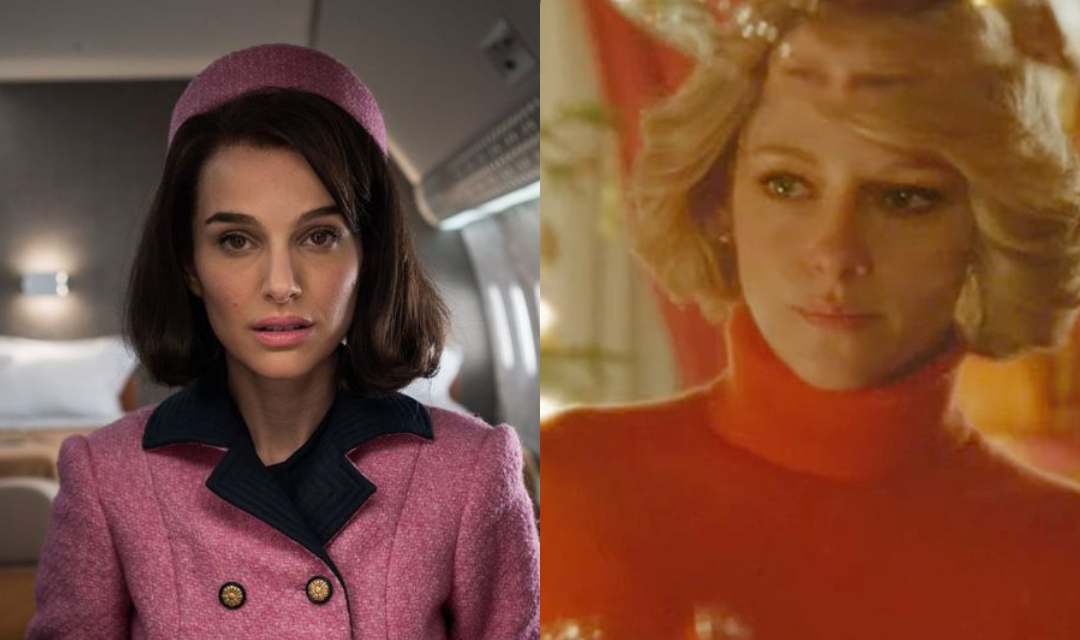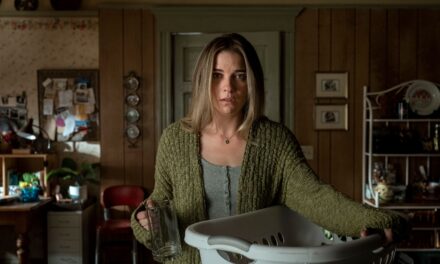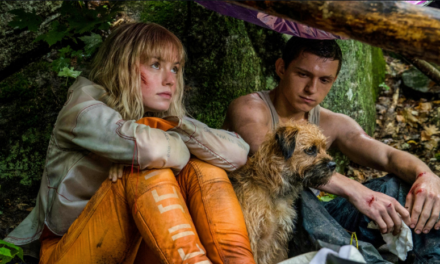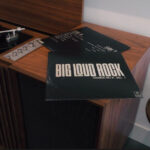Grief hits all of us in a distinct, unique way. Losing someone or something wraps around you like thorns on a flower’s stem. The sharp, protruding apparatuses are present to encase the beauty that’s displayed like a do not touch sign on an art gallery. While many of us can retreat to the arms and hands of those who love us with a semblance of privacy, this is very different for those who bear the sheering light in the public eye. It’s as if they are wearing two globes of burden on their backs, the sadness inside themselves and the tears that we shed for them. There’s a difference between the public mourning we get to partake in and the secret tears that stain their pillowcases during the night that we can’t see.
Director Pablo Larrain approaches Jackie and Spencer from different confined periods and points of view. Jackie takes place following the days after the assassination of President John F. Kennedy. Spencer tells its story for four days during the Christmas holiday in England. Both are from the viewpoints of women who have either lost or are in the process of losing the men that they are married to, along with the lives that they once knew. Jackie’s (Natalie Portman) husband meets a violent and tragic end. She’s left to not only forge a final stamp on John’s presidential legacy, but sift through obligations as a first lady and find herself. Abrupt loss permeates as an eerie fog throughout Jackie, but it’s different when the person you’ve started a family with feels like a ghost.
In Spencer, Princess Diana’s (Kristen Stewart) marriage to Prince Charles (Jack Farthling) is on its last legs. For a holiday that is meant to be abundant with cheer and families gleefully coming together, the window dressing of this union is falling apart. It manifests in anxiety and paranoia for Diana, often appearing in rooms where she feels everyone judges her. She can’t enjoy indulging in sweets without question or the sight of the countryside because “the press could be watching.” Jackie more so embraces the taking a more public role in the finality of her husband’s legacy. She goes as far as to make her children visible figures to the world during the funeral.
Legacy is a big theme with these two narratives. One person embraces it to cast a memory in the stone of history. The other rejects it entirely as it’s too constricting to their free-spirited nature. As depicted in the film, Jackie needed to have a memorable funeral for her deceased husband – ultimately wanting him to be remembered as an influential figure in the presidency. She frequently invokes the legacy of Abraham Lincoln as a prime example of a president who has accomplishments that live on past him. Where Jackie tries to keep the spirit of ‘Camelot’ alive, Spencer deconstructs royalty and valor.
In Spencer, Kristen Stewart’s depiction of Princess Diana lives with a foreboding sense of claustrophobia. Each stare hits her bones at family dinners with the royal family like a sharp sense of judgment. The cameras bulbs of the paparazzi reduce Diana to tears. To her, her clothes feel as though they are an extravagant coffin, sealing her off from an old life that she longs for. In a heated discussion with Prince Charles), he tells her that there needs to be two of her, one that the public sees and “the real her.” Throughout Spencer, there’s a longing for Diana to experience life that she once knew, but knowing that can never happen.
For Larrain, both the quiet moments and environments are just as important as the dialogue on screen. For Spencer, her childhood home is rife with decay and worn foundation. The extravagance and glamour of the English compound feel like a prison for her. Cinematographer Claire Mathon often shows Diana from a broad perspective, traveling down endless hallways of despair. The White House in Jackie is primarily untouched by time – rather a living relic of previous presidents before. It serves as a reminder for Jackie of the sudden life that got snatched from her and soon changed. Both serve as houses of perceived perfection, withholding the many secrets and splinters within. The silent and intimate moments of anguish that they both experience alone are where the curtain comes down—the gasps for air break through the facades of makeup and costumes. Jackie and Diana feel human, even though the circumstances seem impossible.
These films serve as a unification for both women through their children. Both Jackie and Diana want the best for them–albeit in different ways. Jackie elects not to shield Caroline (Sunnie Pelant) and John Jr. (Brody and Aiden Weinberg) from the horrors of their father’s death and shows the world the void that he’s going to leave. Diana wants Prince William (Jack Nielen) and Harry (Freddie Spry) to live regular lives. The father figures in both films are absent in the physical or emotional form. Each mother has to fill that void while keeping some grounding to be present. While there’s an atmosphere of dreck, Larrain gives us these moments of a mother’s love as an uplifting technique.
“I never wanted fame. I just became a Kennedy,” Jackie says, looking out from her vantage point. The stories of Jackie and Spencer are over thirty years apart, but share similar parallels with the heaviness of trying to find oneself through impending loss under the viewpoints of many. Imagine how you feel experiencing all of life’s breaks and blows as a regular person. They feel even harder when you’re living in an anthill for all to see and prod. Larrain’s methods sometimes take liberties with the source material, even fantastical at points. He has provided a poignant and sober look at how it is to experience personal strife through the eyes of two famous women.













